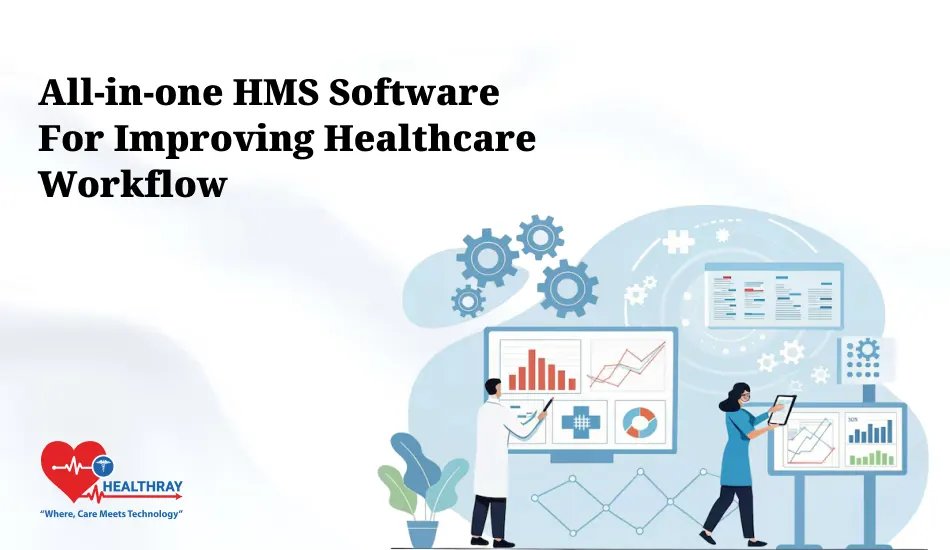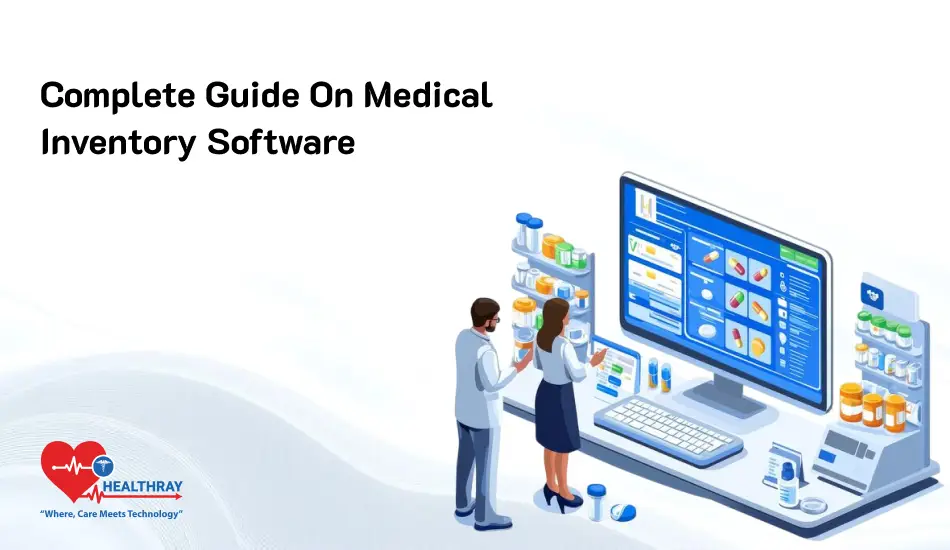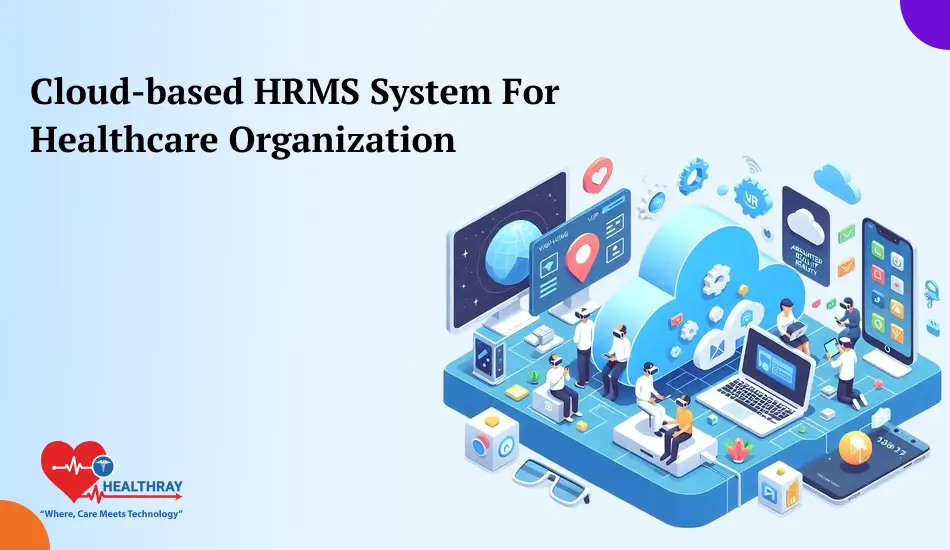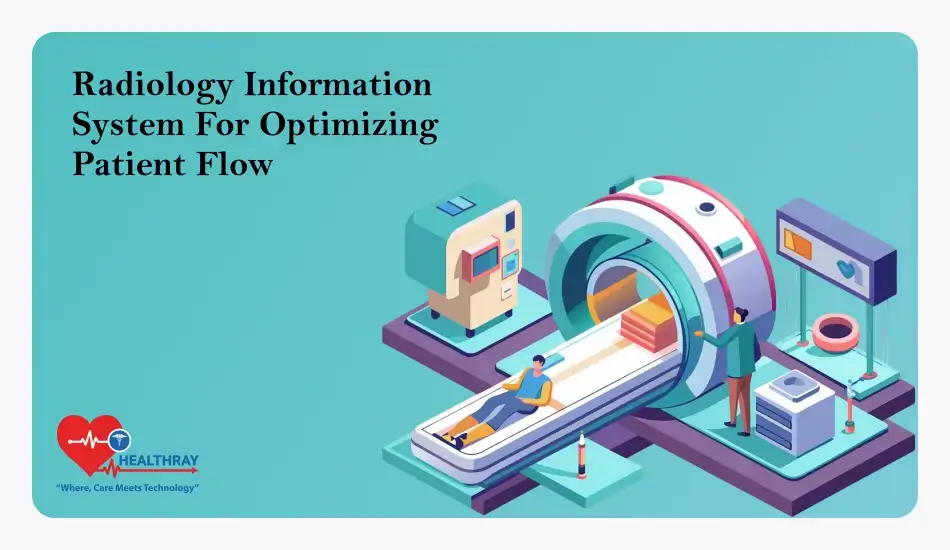The pharmacy management world is changing fast. New tech, shifting regulations, and evolving patient expectations are reshaping how pharmacies operate. With these changes, pharmacy owners, pharmacists, and healthcare administrators face both challenges and opportunities. Understanding where pharmacy management is headed can be a big advantage in staying competitive, improving efficiency, and enhancing patient care.
This guide dives into key trends that are shaping the future of pharmacy management. From the latest tech to patient-focused approaches, we’ll cover the shifts you can expect and how to get ready. Whether you run a local pharmacy or oversee pharmacy operations, staying informed on these trends can help you make decisions that keep your practice ahead.
Technological Advancements in Pharmacy Management
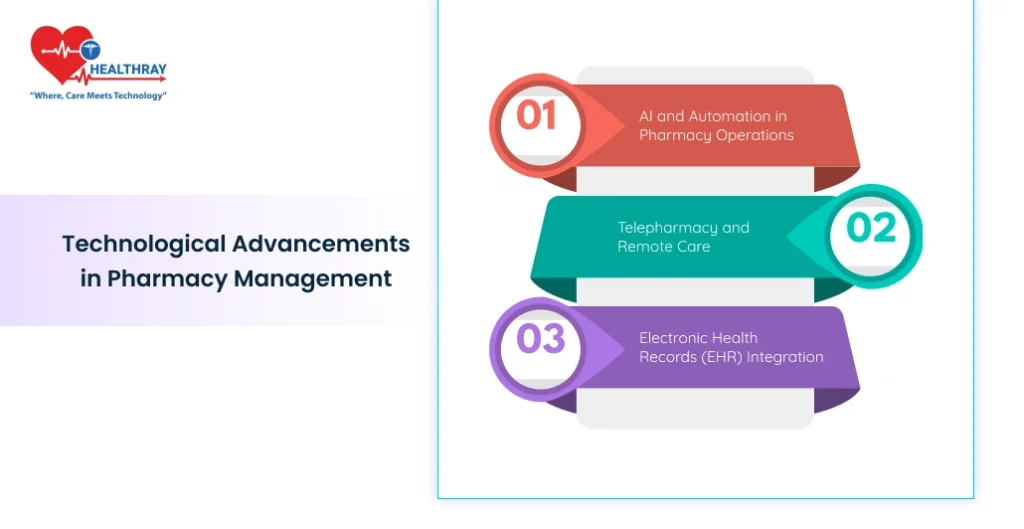
Technology is rapidly changing the Pharmacy Management System, and keeping up with these shifts can make a real difference in daily operations and patient care. Here are some of the most impactful advancements to watch for:
AI and Automation in Pharmacy Operations
AI is stepping into pharmacy workflows, simplifying tasks that used to be time-consuming. For example, AI tools are now able to sort through patient data, predict inventory needs, and even recommend personalized treatment options based on patterns in health records. Automation is also reducing manual tasks, like managing prescription refills or inventory tracking, which saves time and helps staff focus on more patient-centered activities. As AI systems become more common, pharmacies that embrace them may see smoother operations and better patient service.
Telepharmacy and Remote Care
Telepharmacy is emerging as a powerful solution, especially for patients in remote areas or those with limited mobility. This technology allows pharmacists to consult with patients via video calls or other online platforms, offering medication guidance and advice without needing to be physically present. This approach not only expands patient access but also allows pharmacies to manage higher volumes without overcrowding. Telepharmacy has the potential to make pharmacy services more flexible and accessible, aligning with the growing demand for remote healthcare options.
Electronic Health Records (EHR) Integration
Connecting pharmacy systems with Electronic Health Records (EHRs) is making it easier to provide seamless care. When EHRs link directly with pharmacy management systems, pharmacists gain a fuller view of a patient’s health history, recent treatments, and potential drug interactions. This integration not only improves patient safety but also allows for a more coordinated approach with other healthcare providers. For pharmacies, adopting EHR-integrated systems means better collaboration, fewer errors, and an overall improvement in care quality.
Pharmacy management technology is evolving quickly, and staying up-to-date on these advancements can offer a competitive edge. Pharmacies that leverage AI, telepharmacy, and EHR integration are likely to see smoother workflows, better patient experiences, and a stronger standing in the industry.
Regulatory Changes Impacting Pharmacy Management
Regulatory shifts can significantly impact pharmacy operations, from daily workflows to long-term strategic planning. Pharmacy owners, pharmacists, and healthcare administrators need to stay on top of these changes to avoid compliance issues and maintain smooth operations. Here are some regulatory trends to watch:
Evolving Standards for Patient Safety and Medication Management
Regulators are increasingly focused on patient safety, pushing for stricter guidelines on medication handling, storage, and administration. These standards may require pharmacies to adopt advanced tracking systems and secure handling practices to meet safety benchmarks. While these changes can seem daunting, staying informed and investing in compliant technologies can make it easier to meet these standards without disrupting daily operations.
Data Privacy and Security Regulations
With digital systems playing a larger role in healthcare, data privacy regulations are tightening. Laws like HIPAA in the United States and similar frameworks worldwide aim to protect patient information. Pharmacies are expected to safeguard patient data from unauthorized access, making data security investments a priority. For pharmacies adopting digital solutions, it’s essential to choose vendors who prioritize data privacy, ensuring systems are equipped with encryption, regular security updates, and access control.
Drug Pricing and Reimbursement Policies
Policies around drug pricing and insurance reimbursement are also in flux. Changes in these areas can impact profit margins and influence which medications pharmacies can offer. Some pharmacies may need to re-evaluate supplier relationships or consider alternative sourcing strategies to adapt to these pricing changes. Staying informed on upcoming reimbursement policies can help pharmacies strategize effectively, ensuring they remain financially sustainable while meeting patients’ needs.
Navigating regulatory changes can be challenging, but pharmacies that stay proactive in compliance will find it easier to adapt. Keeping an eye on policy updates and adopting compliant technologies can help streamline the process, allowing pharmacies to focus more on patient care
Patient-Centric Approaches in Pharmacy Management
Today’s patients expect personalized, convenient care that fits their unique health needs. Pharmacies that embrace patient-centered strategies are not only improving service but also building stronger relationships with their communities. Here are some ways pharmacy management software is evolving to be more patient-focused:
Personalized Medicine and Customized Care
The one-size-fits-all approach is giving way to personalized medicine. With advancements in genomics and data analytics, pharmacies can offer treatments tailored to individual patients’ needs. For example, pharmacogenomic testing helps determine how a patient might respond to certain medications, minimizing adverse effects and maximizing effectiveness. Pharmacies incorporating personalized care options are setting themselves apart by providing a more precise and effective level of service.
Digital Tools for Patient Engagement
Digital tools, like mobile apps and patient portals, are transforming how patients interact with pharmacies. These tools enable patients to refill prescriptions, access medication information, and communicate with pharmacists directly from their devices. By making healthcare more accessible, digital tools enhance patient engagement and loyalty. Pharmacies investing in user-friendly apps and digital services are more likely to meet the expectations of tech-savvy patients and streamline their services.
Health Education and Wellness Programs
Many pharmacies are expanding their role by offering health education and wellness programs. These initiatives can include workshops on managing chronic conditions, medication management classes, and even vaccination drives. By providing these services, pharmacies position themselves as community health partners rather than just medication providers. These efforts not only help improve health outcomes but also build trust with patients, encouraging them to rely on the pharmacy as a primary health resource.
Focusing on patient-centric approaches helps pharmacies meet patients’ needs while standing out in a competitive market. Pharmacies that prioritize personalization, digital engagement, and wellness initiatives are likely to see greater patient satisfaction and loyalty.
Operational Strategies for Adapting to New Trends
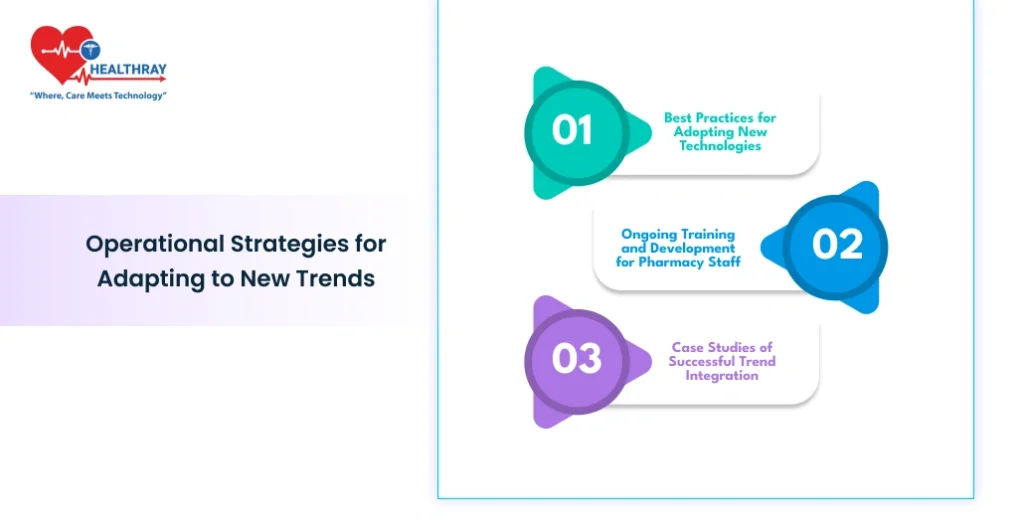
Embracing new trends can bring great benefits, but implementing these changes requires careful planning. Pharmacy owners, pharmacists, and healthcare administrators can use the following strategies to adopt new technologies and practices without disrupting daily operations.
Best Practices for Adopting New Technologies
Introducing new tech like AI systems or telepharmacy tools can feel overwhelming. A phased approach works best—starting with one or two areas where technology can have the most impact. For example, automating inventory management before moving on to patient engagement tools can help ease the transition. Regularly training staff on these technologies and gathering feedback during implementation can ensure that everyone feels comfortable and capable of using the new systems.
Ongoing Training and Development for Pharmacy Staff
Change isn’t just about new tools; it’s also about new skills. Providing regular training sessions can help staff understand and confidently use new technology. This includes hands-on workshops, online modules, or even bringing in specialists for specific areas like data security or customer engagement. When staff members are well-prepared, they’re more likely to adapt smoothly and deliver better service to patients.
Case Studies of Successful Trend Integration
Learning from others can be incredibly valuable. Many pharmacies have successfully adopted trends like telepharmacy, automation, or personalized medicine, and their stories offer insights and tips for smooth implementation. For instance, some pharmacies have shared how starting small and focusing on one patient-centric tool at a time helped them adapt without overwhelming their teams. Reviewing these case studies can help pharmacy managers identify practical steps and avoid common pitfalls.
Operational strategies that focus on careful, phased implementation and staff readiness are crucial for success. Pharmacies that take the time to plan, train, and learn from others are better equipped to adopt new trends and provide excellent care to their communities.
Conclusion
The future of the Hospital Management System is full of opportunities. By keeping an eye on new trends, pharmacy owners, pharmacists, and healthcare administrators can not only adapt to changes but also thrive in a competitive industry. Embracing technological advancements, staying updated on regulatory changes, and putting patients at the center of care can all make a huge difference.
Preparing for these shifts doesn’t have to be overwhelming. Focusing on gradual implementation and ongoing training can help make the transition smoother and more manageable. Pharmacies that are proactive in adopting these trends are better positioned to enhance patient care, streamline operations, and strengthen their place in the healthcare landscape.
Staying informed and flexible will be key to navigating the changes ahead. Pharmacies ready to evolve with these trends will likely see growth, greater patient satisfaction, and long-term success.


